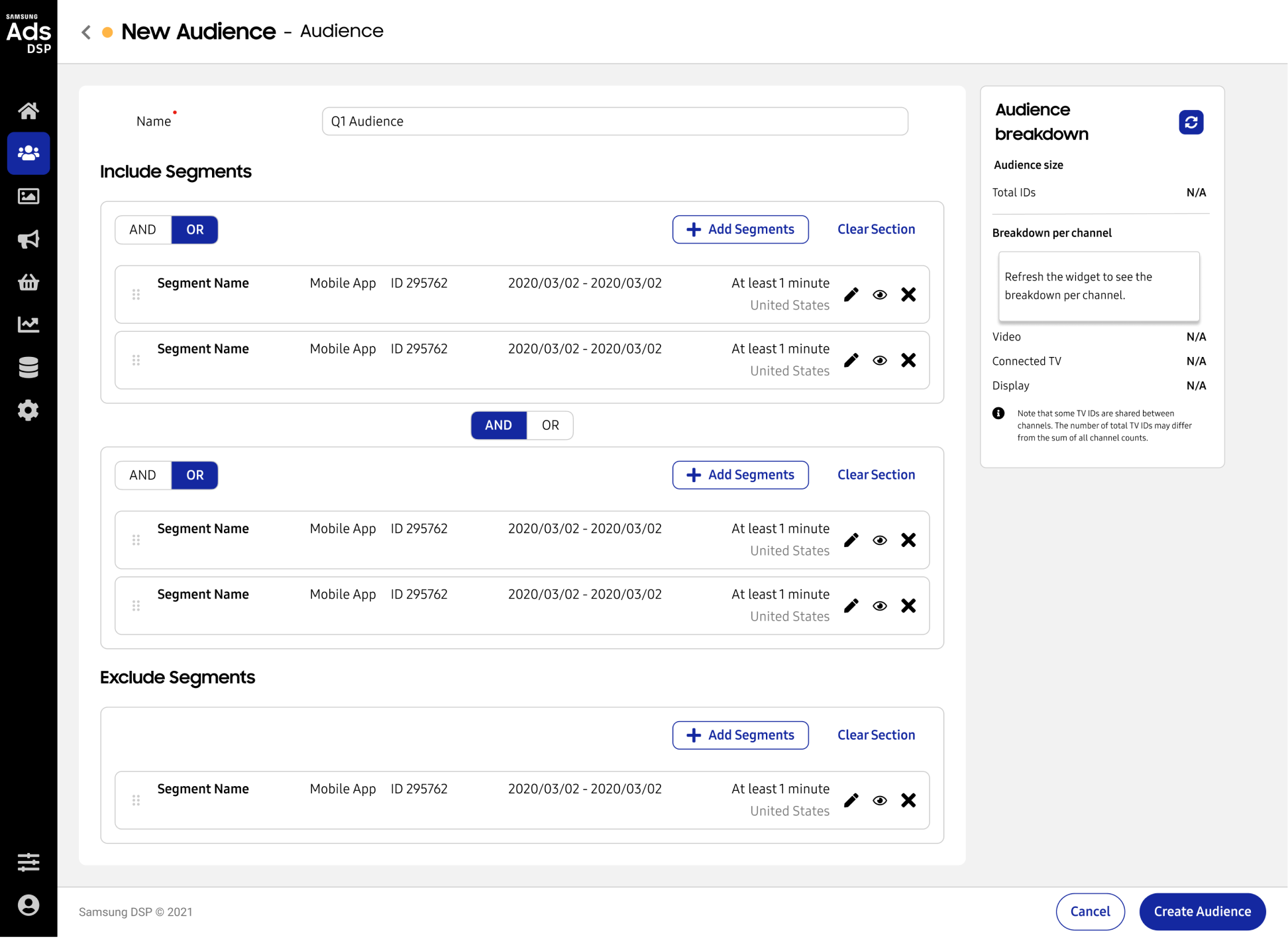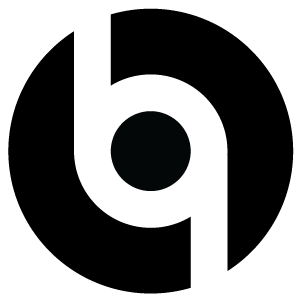
Redefining
Audience Builder
Brand
Samsung Ads
Role
Lead Designer
Platform
Samsung DSP
Domain
Data Management



BACKGROUND
The Audience Builder is a crucial feature in Samsung’s DSP platform. It’s where users can define their target audience and evaluate the potential reach of their ad campaigns. Leveraging data from Samsung devices, it allows for the creation of highly targeted audience segments.
An audience can be built from various datasets, including first-party, third-party, and Samsung’s proprietary data, making it a standout feature in Samsung’s offering.
THE CHALLENGE
This redesign project focuses on refining the Audience Builder, addressing key pain points, and boosting usability. The goal is to make audience creation intuitive and powerful, enhancing the ad strategy’s effectiveness.
MY INVOLVEMENT
User Insights & Ideation
I partnered with two project managers and a researcher to identify key pain points and opportunities, translating insights into features that meet customer needs. We conducted thorough research to guide our ideation.
Experience Strategy & Vision
I developed user flows and wireframes to communicate the experience vision and strategy. This approach facilitated alignment and informed decision-making across the team.
Planning & Scope Definition
Working with my project manager partners, I defined the product, advocated for customer goals, and balanced them with business objectives. I prioritized and negotiated features for both the initial launch and future iterations.
Oversight & Coordination
I led the design efforts, collaborating with two product designers, engineers, and PMs to translate product requirements into actionable features, ensuring we stayed within resource constraints.
Testing & Iteration
We conducted a round of usability testing and are now planning the next steps based on user feedback to refine and improve the product.
SCOPE OF WORK
- Information Architecture
- Journey mapping
- Data Visualization Research
- Taxonomy Definitions
- Task flows
- Wireframes
- End-user interviews
- Low/Mid/High fidelity Mocks
- Usability testing
- Heuristics Evaluation
- UI prototyping
THE PROCESS
Identify Key Challenges
We initiated this project with limited insights into the pain points our users were experiencing. To gather the necessary information, we utilized several sources: Support tickets created, direct feedback from users and previous research.
Define Project Scope
Collaboration with the Product Manager was undertaken to outline the process, estimate effort (using t-shirt sizing), and establish deadlines. Simultaneously, workflows were developed, and the most suitable designer for the project was identified.
Validate Issues and Assumptions
Two rounds of usability testing during the low-fidelity and mid-fidelity phases were conducted to identify core problems. Insights from these tests, combined with heuristic evaluations and ticket reviews, highlighted the major issues to be addressed.
Research and Verification
Assumptions were further validated through qualitative research to ensure the identified issues were properly understood and addressed.
Plan for Implementation
The final product release was planned to ensure that the redesign effectively addressed the core problems and aligned with user needs.
TAXONOMY & INFORMATION ARCHITECTURE
DATASET ANALYSIS

DATA ARCHITECTURE

Workflow redesign
DATASET ANALYSISWORKFLOW: CREATE AN AUDIENCE AND ADD TO CAMPAIGN

audience creation / Segment Selection
BEFORE

AFTER

CHALLENGES
SOLUTIONS
Basic Segment classification
Enhanced discoverability through two-level categorization
Proprietary Samsung data only
Inclusion of Samsung, 1st Party, and 3rd Party data
Single segment type selection
Support for multiple segment type selections
Limited visibility on selection
Clear summary of selected segments
audience creation / Segment combination
BEFORE

AFTER

CHALLENGES
SOLUTIONS
Limited boolean operators
Flexible boolean operators and segment grouping
Lack of information on segments
Support for multiple segment type selections
Limited summary information
Enhanced audience insights
Audience creation workflow
AUDIENCE CREATION (EMPTY)

1. Guided UI to create a new audience
SEGMENT SELECTION (NO SEGMENT SELECTED)

2. Choose the Audience Country and see compatible segments available.
SEGMENT SELECTION (SEGMENTS SELECTED)

3. Select and add one or multiple audience segments while accessing the summary
AUDIENCE CREATION (SEGMENT COMBINATION)

4. Combine and group segments, analyze Audience Insights and Create an Audience
THE RESULTS
The redesigned audience builder enables users to find the right audiences more efficiently. It allows them to combine segments from various data sources in one central location, reducing the need to switch between multiple sections and manually enter complex boolean operators. This streamlined tool simplifies the audience creation process for users. Ultimately, these improvements drastically enhanced the operational efficiency of our AdOps team, as the time required to create new audiences was reduced from 8 hours to less than 1 hour, unlocking an additional $15M in incremental revenue annually.
